Subfamily Myrtoideae Scientific name Metrosideros Rank Genus | Tribe Metrosidereae | |
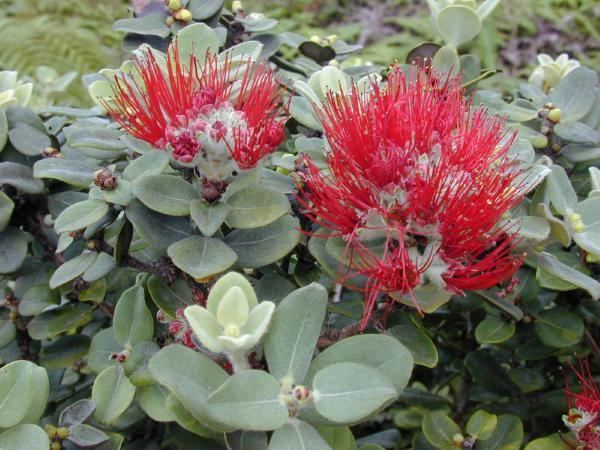 | ||
Lower classifications Metrosideros excelsa, Metrosideros polymorpha, Metrosideros umbellata, Metrosideros collina, Metrosideros macropus | ||
Metrosideros garden plants
Metrosideros /ˌmɛtrəˈsɪdərəs, -troʊ-/ is a genus of approximately 60 trees, shrubs, and vines mostly found in the Pacific region in the Myrtaceae family. Most of the tree forms are small, but some are exceptionally large, the New Zealand species in particular. The name derives from the Ancient Greek metra or "heartwood" and sideron or "iron". Perhaps the best-known species are the pōhutukawa (M. excelsa), northern rātā (M. robusta), and southern rātā (M. umbellata) of New Zealand, and ʻōhiʻa lehua, (M. polymorpha), from the Hawaiian Islands.
Contents
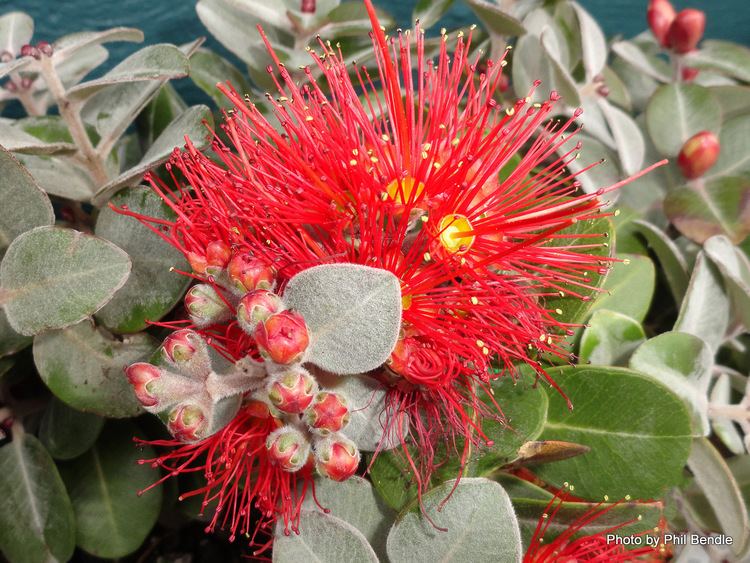
Metrosideros lanceolata
Distribution
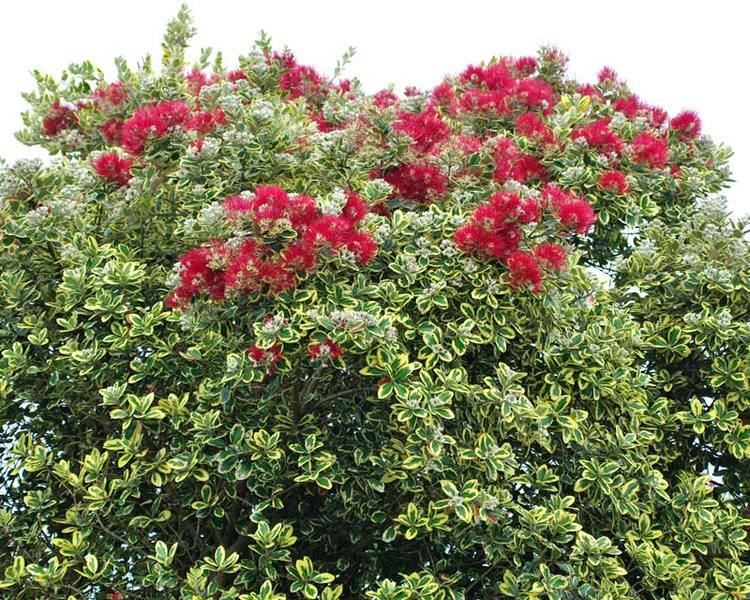
Metrosideros is one of the most widely spread flowering plant genera in the Pacific. New Caledonia has 21 species of Metrosideros, New Zealand has 12, New Guinea has seven and Hawaiʻi has 5. The genus is present on most other high Pacific Islands, including Solomon Islands, Vanuatu, Fiji, Samoa, Cook islands, French Polynesia, Bonin Islands and Lord Howe Island, but absent from Micronesia . The genus is also represented by one species in the Philippines, one in South America (Chile and Argentina), and one outlier in South Africa. Metrosideros seeds are very light weight and easily dispersed by wind. The seeds can also survive freezing temperatures, and up to 30 days submerged in salt water and still germinate. which probably accounts for their wide distribution. They are often found as pioneer trees on lava flows and on mountain ridges.
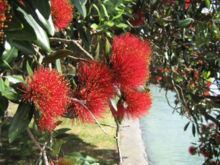
It has always been something of a mystery to Southern Hemisphere botanists that, despite the clear propensity towards long distance dispersal, this genus does not occur in Australia.
Fossil Record
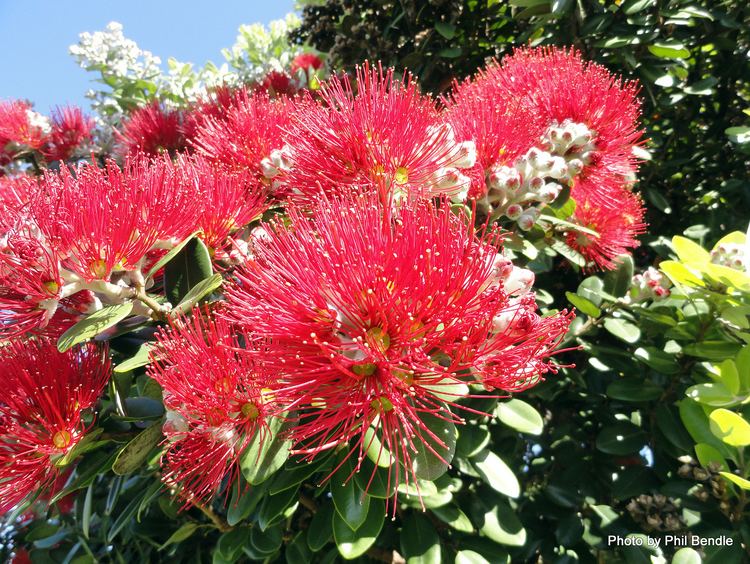
For some time it had been hypothesised that Metrosideros may have evolved in New Zealand, and dispersed from there throughout the Pacific. This was due to the long fossil record of Metrosideros in New Zealand coupled with the absence of any Metrosideros fossils on other Gondwanan landmasses. The oldest conclusive fossil evidence of Metrosideros in New Zealand is fossil fruits from the Miocene aged Manuherikia sediments of Central Otago. There is a fossil pollen record going back much further, but it has been shown that Metrosideros pollen is very similar morphologically to many other genera within the family Myrtaceae and as such, fossil pollen cannot be reliably used as an oldest record of the genus.
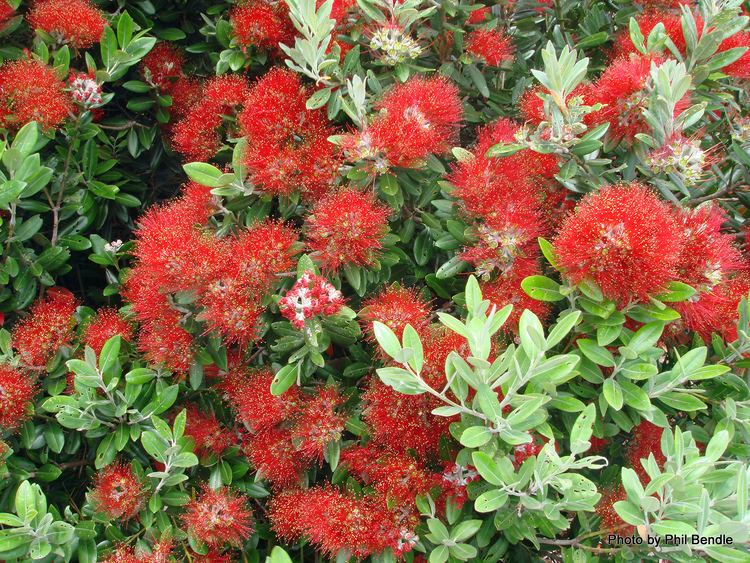
The oldest conclusive record of Metrosideros are fossil fruits and flowers of Metrosideros leunigii, an extinct species, from Oligocene aged sediments in Tasmania, Australia. This is very curious considering that Metrosideros is one of the most widely spread plants in the Pacific, and is not present in Australia today. These fossils may also point towards an Australian origin for the genus.
Cultivation
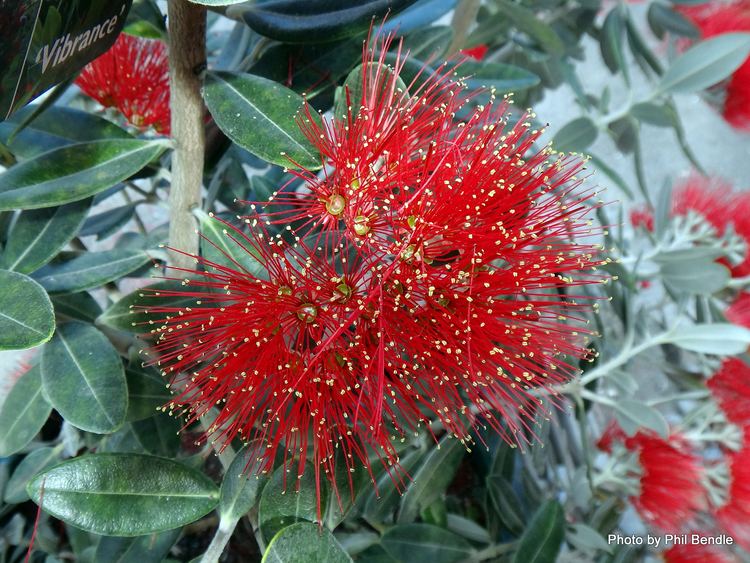
Metrosideros are often cultivated for their showy flowers, as street trees or in home gardens. The flowers are generally red, but some cultivars have orange, yellow or white flowers. Some names listed in horticultural catalogs and other publications, such as M. villosa and M. vitiensis, are actually the names of varieties or cultivars (usually of M. collina) rather than valid scientific species. The pōhutukawa of New Zealand has several cultivars grown in Australia, Hawaiʻi and California and it has been planted successfully in the north of Spain and on the Scilly Isles off the south-west coast of Britain, but the species is considered an invasive pest in parts of South Africa. Metrosideros kermadecensis is recently naturalised in Hawaiʻi, and has the potential to become a pest. In turn, various cultivars of M. collina and M. polymorpha are widely grown in New Zealand under various names. Metrosideros umbellata occurs naturally south of mainland New Zealand in the Auckland Islands at 50° South latitude, and is the hardiest member of the genus, and a few cultivated specimens are growing in Scotland.
